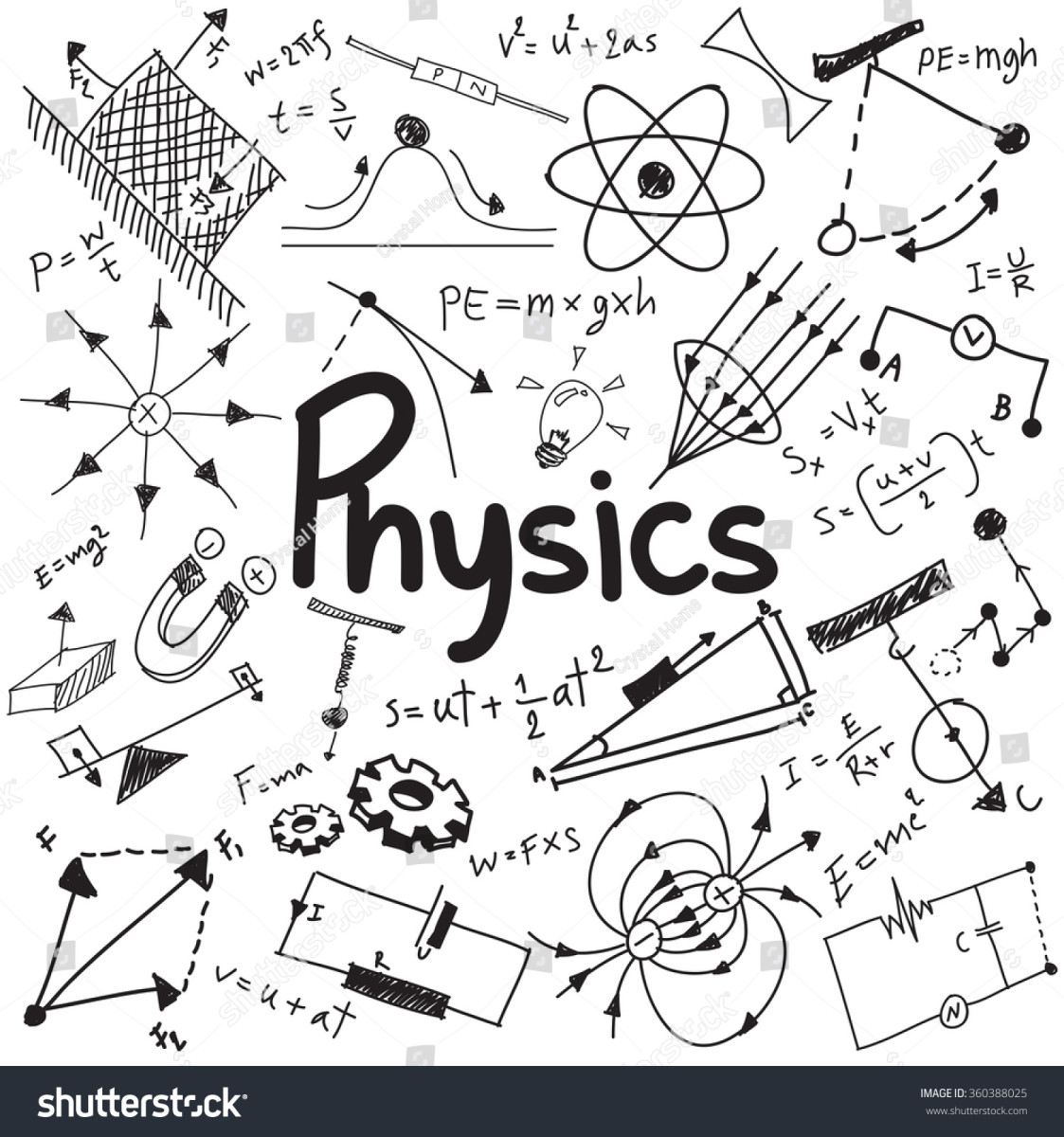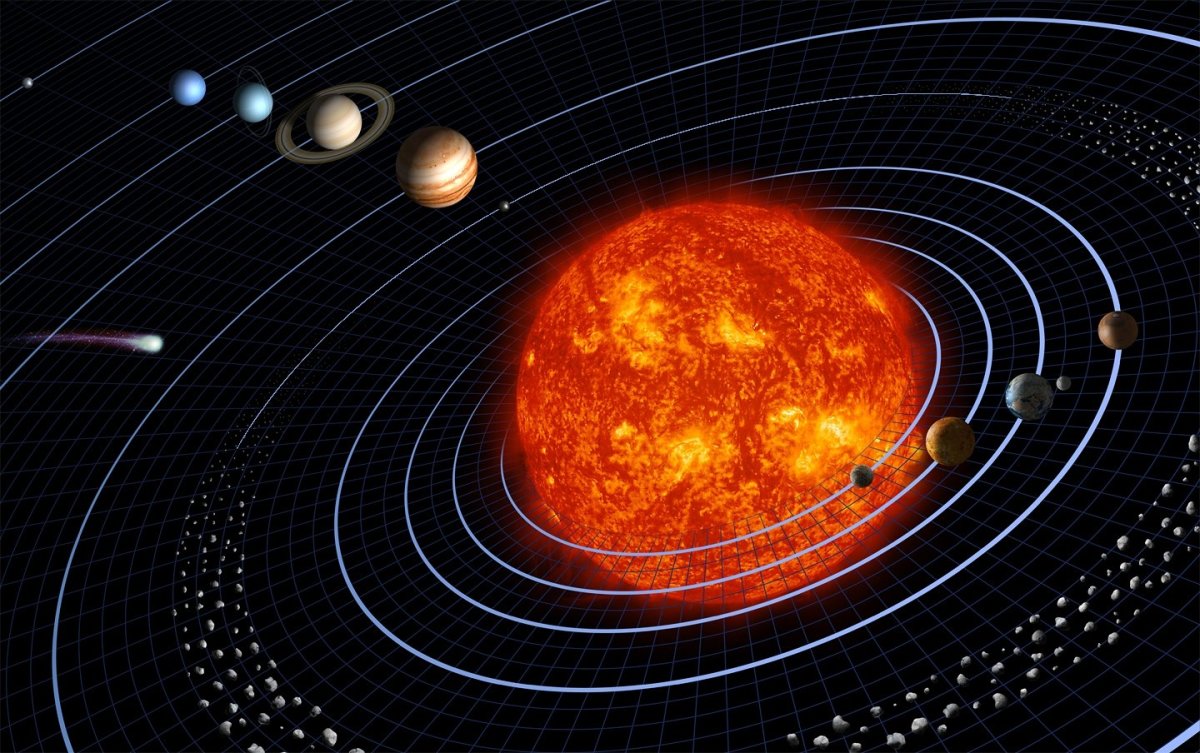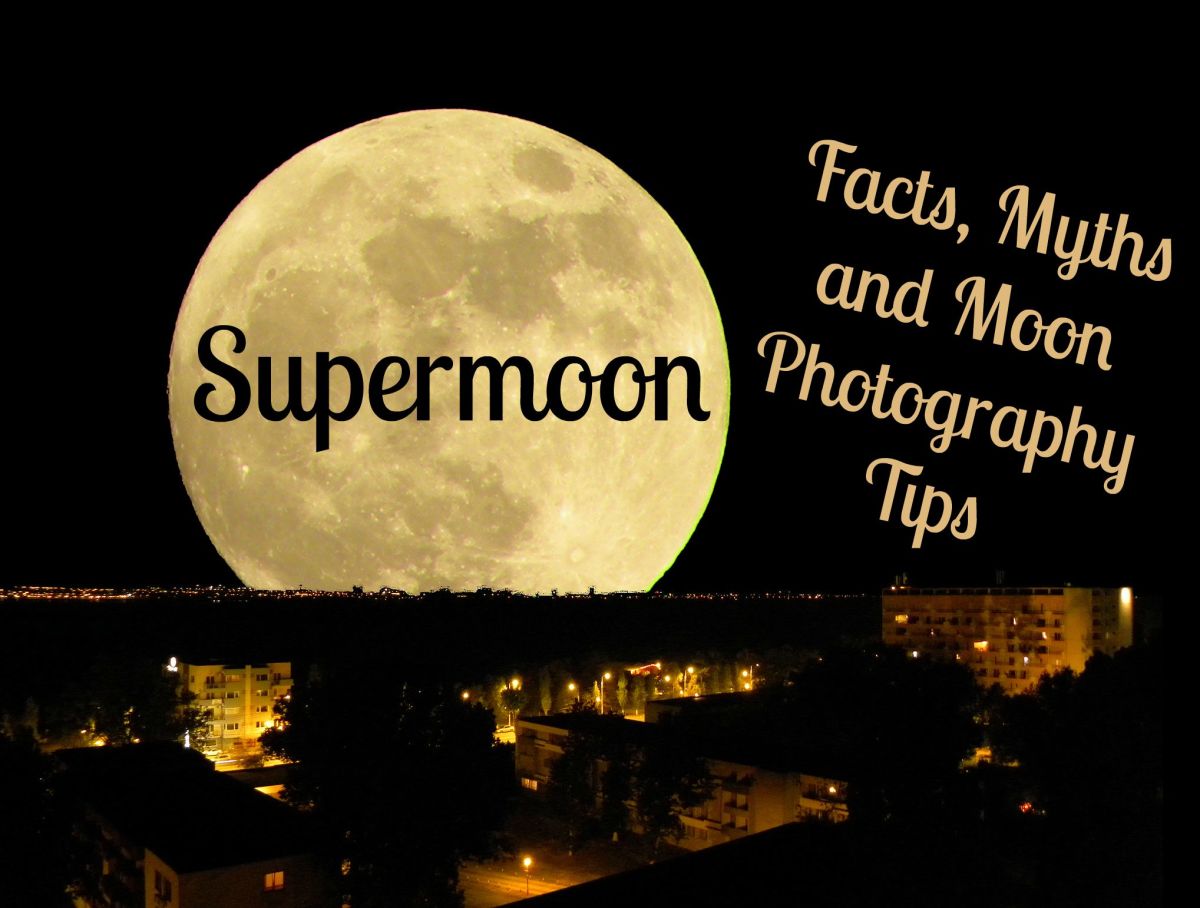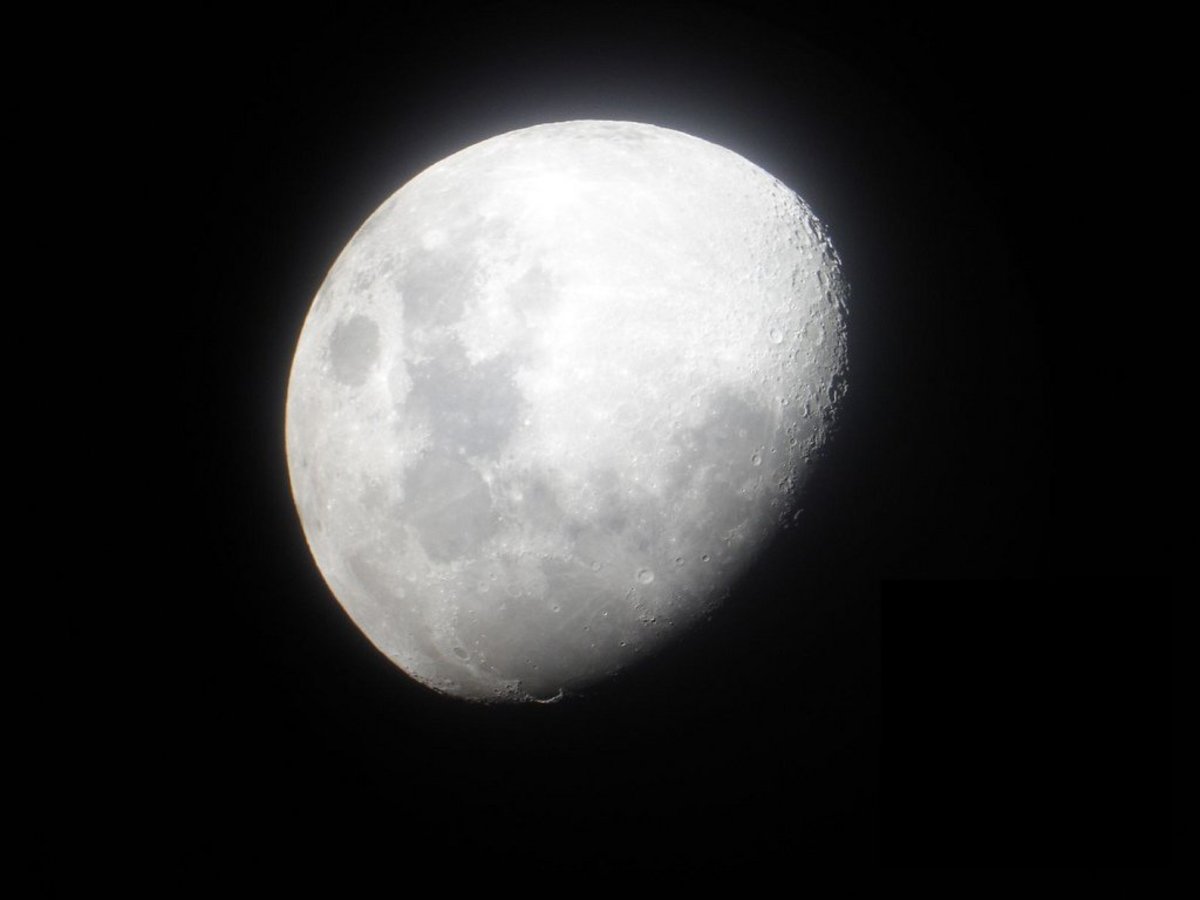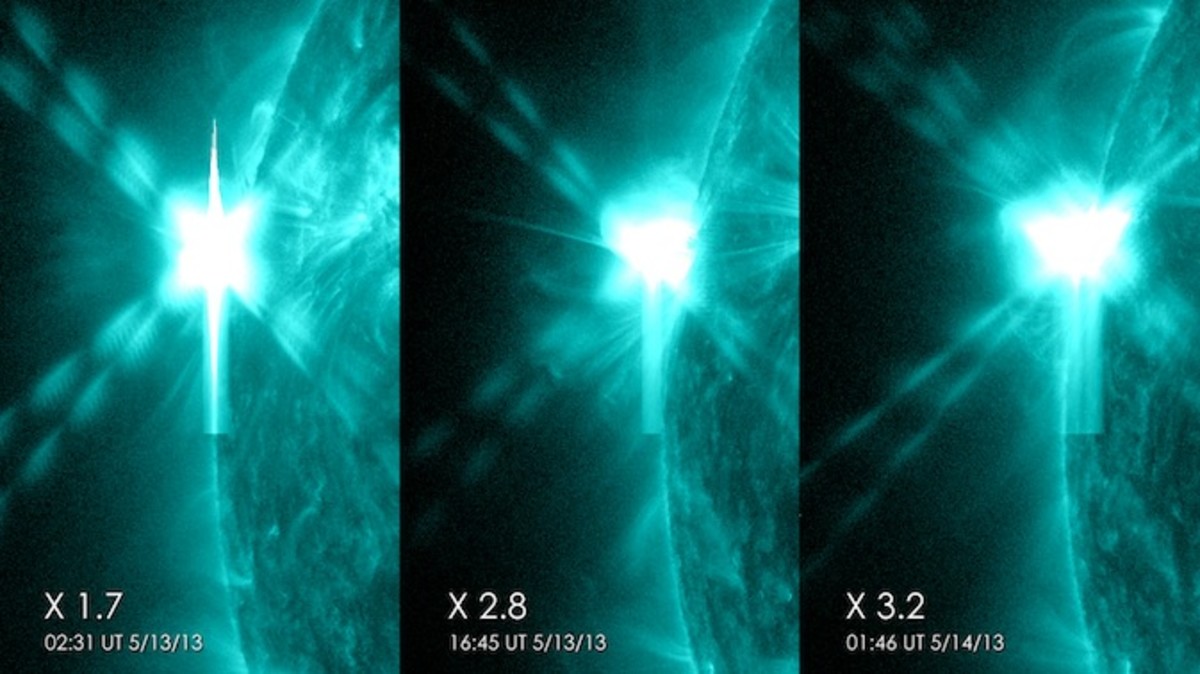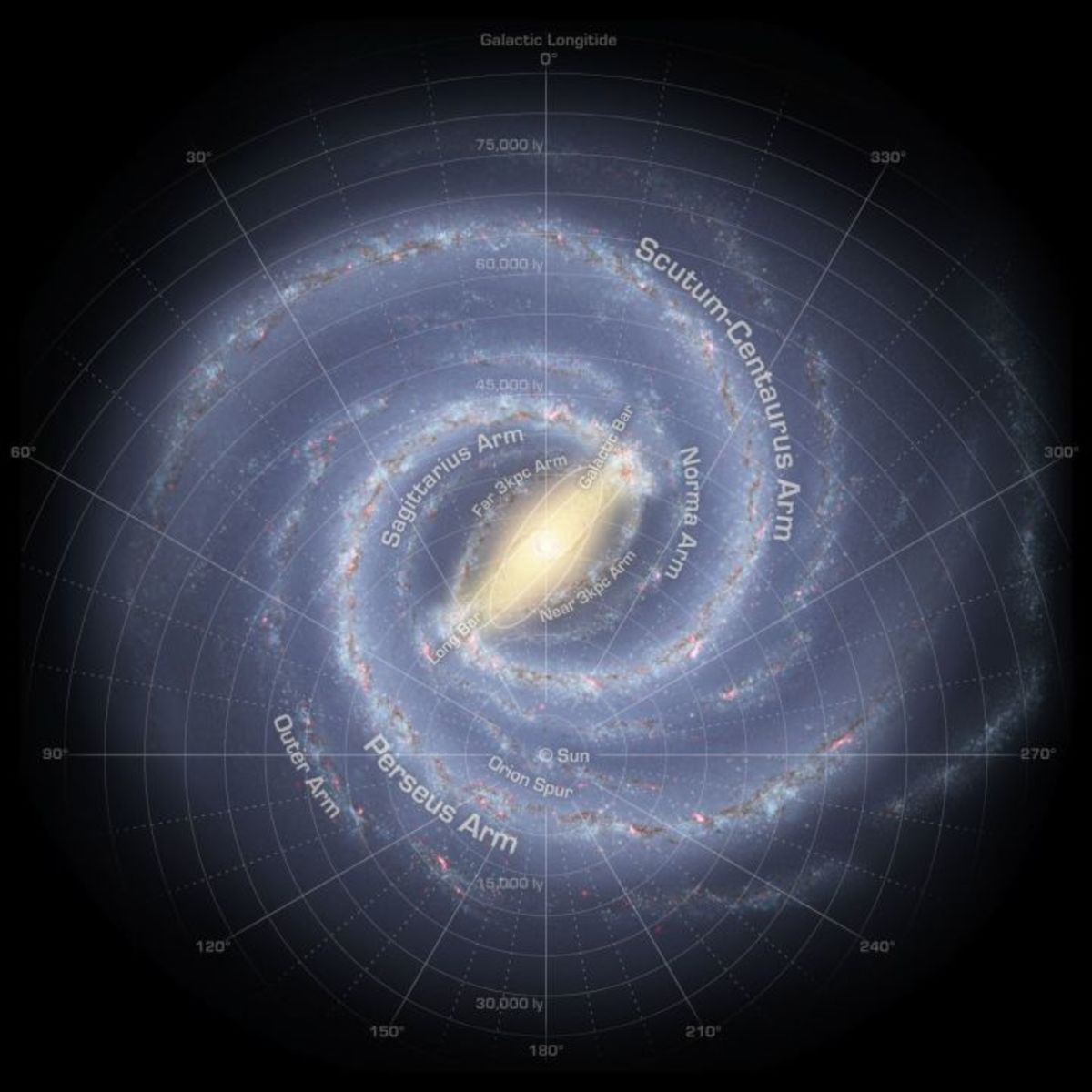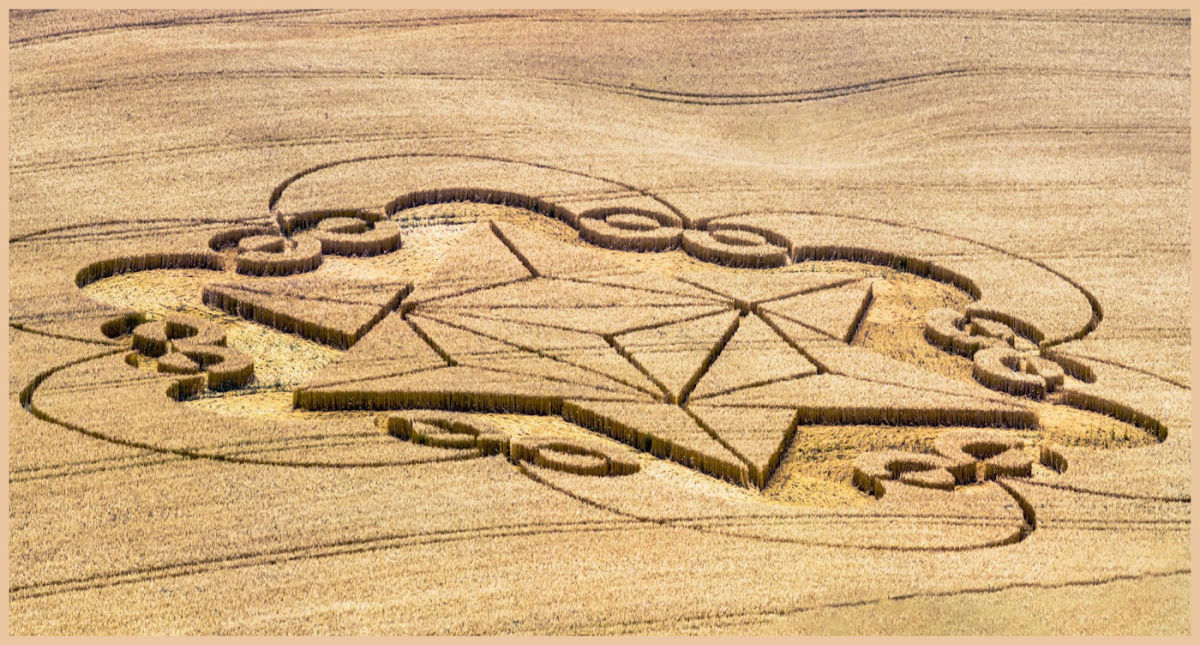The Neglected Earth’s Movement ------ Earth’s “ZiZhuan”, Earth Rotating About the Earth–Moon Barycenter
Feb. 19th 2013
Written (Chinese) by Ye Sen
Translated (English) by Ye Er
Copyright © 2013
Registered, U.S. Copyright Office
1. Earth’s “ZiZhuan” (“子转”), Earth Rotating About the Earth–Moon Barycenter
We all know the Earth has 2 movements - Earth’s rotation on its own axis, which results in day and night phenomenon; Earth’s revolution around the Sun, which results in comparatively distinguished 4 seasons at the middle latitude of the Earth. This is what we learned from school.
What most people don’t know is the Earth has another movement in solar system - Earth rotating about the Earth–Moon barycenter, a responsive motion to its interaction with the Moon. In this article, I call this Earth’s movement “ZiZhuan” (Simplified Chinese:子转; Pinyin: ZiZhuan) to distinguish it from the other two Earth’s movements.
(So in this article, the Earth's “ZiZhuan” means the Earth rotating about the Earth–Moon barycenter.)
(Scientists have long known about this Earth’s movement. The author wants to introduce it because he is going to use it to explain the cause of natural phenomena on the Earth like tides, Earthquakes …… etc.)
In the third planetary ring of the solar system, the Earth is not an isolated celestial body. It has a little friend, the Moon. Not too far and not too close, they act together and form a strong group, rotating about the Earth–Moon barycenter in every 27. 32 days. (All numbers in this article are from reference books, and are used as approximate numbers)
Although the Moon is much smaller than the Earth, its diameter is only 1/4 that of the Earth, its mass is only 1/81 that of the Earth, which can only make itself an Earth’s satellite. But minor force can also make a difference, the motion of this little satellite lets the big planet, the Earth, must respond.
This can be thought of roughly like what we see from the sports field. The athletes of Hammer throw are built with strong bodies, but when they start to throw the small hammers, they still have to bend backwards, moving back their center of gravity to achieve balance. This is analogous to the Earth – Moon system where the Earth is a hammer throw athlete, abiding by all the rules in celestial bodies’ movements.
After all, the Moon is a lower level star compared with the Earth. The interaction between the Earth and the Moon can be regarded as a “parent-child” activity. This is why I call this Earth’s movement “ZiZhuan” (“子转”) as “Zi” means “son, offspring, lower level” in Chinese.
(So "子转" is a Chinese word)
What’s it like when the Earth rotates about the Earth–Moon barycenter? What are the characteristics of this movement?
Let’s do some math first. Let’s find the pivot of the Earth’s “ZiZhuan” (“子转”), the barycenter of the Earth-Moon system. See Diagram 1. (All Diagrams in this article are sketches.)
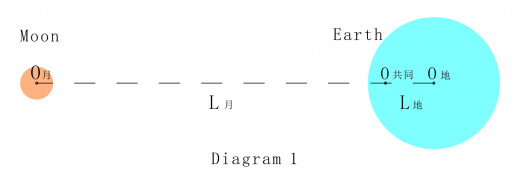
Where
O地is the center of mass of the Earth;
O月is the center of mass of the Moon;
O共同is the barycenter of the Earth-Moon system;
L地is the distance from the center of mass of the Earth to the barycenter of the Earth-Moon system;
L月is the distance from the center of mass of the Moon to the barycenter of the Earth-Moon system;
M地is the mass of the Earth;
M月is the mass of the Moon.
Using the lever balance theory, we have this formula:M地*L地=M月*L月,with reference to the average distance from the Earth to the Moon,
L地+L月=38.4(ten thousand kilometers),and M月= 1/81 * M地,we can get
L地=0.468(ten thousand kilometers). with reference to the Earth’s radius 0.638(ten thousand kilometers),the barycenter of the Earth-Moon system is under the Earth’s surface 0.17(ten thousand kilometers),it is inside the Earth.
Let’s continue with the previous hammer throw story. The Earth is a big guy, but in “ZiZhuan” (“子转”), he bends backwards less than a body-length.
I’d like to emphasize here that the barycenter of the Earth-Moon system is only a spatial position; it is not a certain point in the Earth, because the Earth is simultaneously rotating on its own axis. I’d also like to emphasize the orbit of the Moon about the Earth is an ellipse, the distance between the Earth and the Moon is variable, L地 is variable. And all numbers in this article are from reference books, and are used as approximate numbers. And the numbers I use here are average numbers.
The Earth’s “ZiZhuan” (“子转”) makes the Earth complete a circle around the barycenter of the Earth-Moon system in every lunation (one month in a lunar calendar). Diagram 2 draws the motion of the Earth’s “ZiZhuan” (“子转”) in half of a lunation. To better understand the positions of the Earth and the Moon, I draw the Moon here too. In this diagram, we can see the Earth’s “ZiZhuan” (“子转”) only works in a very small scale, so it is often described as “staggering” or “swaying” (“晃动”) by people in China.
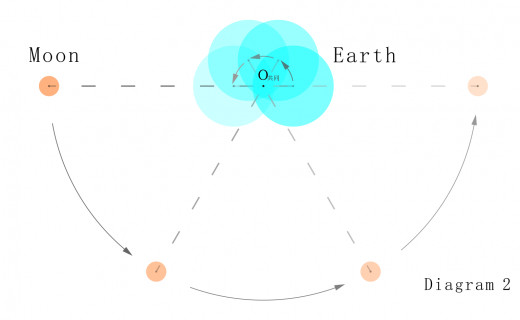
Diagram 3 compares the amplitude of the Earth’s “ZiZhuan” (“子转”) and the amplitude of the Earth’s rotation. Please pay attention to the deep color. In 12 hours, the Earth’s “ZiZhuan” (“子转”) makes its major radius plus short radius (its diameter) only turn 6.6°; but the Earth’s rotation makes its diameter turn 180°, which covers the whole projected area of the Earth. We can see how small the amplitude of the Earth’s “ZiZhuan” (“子转”) is.
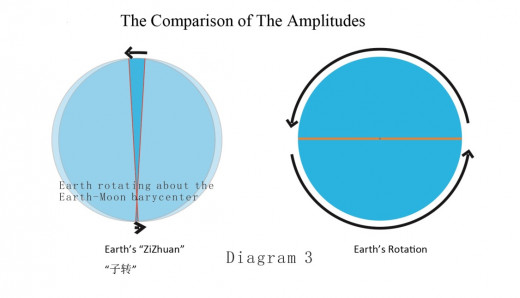
Now let’s summarize:
The characteristics of the Earth’s “ZiZhuan” (“子转”):
1. the Earth’s “ZiZhuan” (“子转”) is the result of the Earth-Moon Interaction, its period is surely the same to the period of the Moon rotating about the Earth–Moon barycenter. This period is long; the angular speed is small;
2. Because the Earth’s mass is much larger than the Moon’s mass, the pivot of the Earth’s “ZiZhuan” (“子转”) falls inside the Earth. So its rotational radius is small. Adding 1 and 2: in a unit interval, its rotational amplitude is small;
3. the Earth’s “ZiZhuan” (“子转”) tends to be in the same direction as the Earth’s rotation. Only the intersection angle of the two orbit planes, “the white road” and the equator, has more than 20 degrees. (The “white road” is the projection of the Moon’s motion trajectory onto the surface of the Earth)
The fact that the Earth rotates about the Earth–Moon barycenter is early known by people. But because of its small range and long period, adding its motion direction almost the same to that of the Earth’s rotation, the Earth’s “ZiZhuan” seems to hide inside Earth’s rotation and often be neglected. People take it as an insignificant want-it-or-not matter. It doesn’t even have an official name.
Aside from some areas in science (like the launching of the spacecraft, at least I think so, or how can the space craft be put into the orbit precisely? ), most areas don’t even count in this factor, let alone the spread of the knowledge of it. Because of this negligence, we lose the chance of knowing our home more scientifically; because of this negligence, when we face many things happening to our Earth every day, we don’t know why; because of this negligence, when we explore secretes of nature, we wander and linger.
In my point of view, the Earth’s “ZiZhuan” (“子转”) should be placed with the Earth’s rotation and the Earth’s revolution. None of them is less significant than the other two, and each one of them has its important scientific value. The Earth’s rotation is like the solo dance of the Earth for self entertainment; the Earth’s “ZiZhuan” (“子转”) is Earth’s perfect interaction with the Moon; the Earth’s revolution is the Earth-Moon group (not only the Earth) join in a public event hosted by the Sun. Because of the existence of the Earth’s “ZiZhuan” (“子转”), the Earth becomes more vivid and colorful, majestic and grand, sometimes even thrilling and breathtaking.
Below is the comparison of the Earth’s rotation, the Earth’s “ZiZhuan” (“子转”) and the Earth’s revolution.
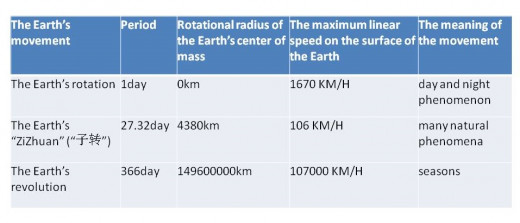
I’d also like to say something about the Moon’s movement. The Moon has its rotation too and it is called Moon’s rotation on its own axis. The Moon orbiting around the Earth (actually is rotating about the Earth-Moon barycenter) is sometimes called Moon’s revolution. But now we have introduced “ZiZhuan” (“子转”), the Moon’s revolution would be better called “the Moon’s “ZiZhuan””. In this way, we won’t mess it up with the “Earth-Moon revolution around the Sun.”
2. Earth’s “ZiZhuan” (“子转”) and Tides
People always attribute the cause of tides to the gravitational forces exerted by the Moon and the Sun, especially by the Moon. Isaac Newton was the first person who explained tides using that. He also used that to prove the existence of gravitational attraction. But let us think deeply, maybe it is wrong.
First thing that makes us feel unsteady about this theory is the changing tidal speed. The lines of the Moon's gravity and the Sun’s gravity move much faster than the speed of sound on the Earth. But have we seen the tides move in the ocean as fast as the supersonic speed?
Second, we always think the lunar gravitational force is bigger than the solar. From some materials “comparing with the Sun, the Moon is much closer to the Earth, the ratio of tide-generating force of the Moon and that of the Sun is 11:5”, but the result we get from our computation turns reverse. Let’s compare these two gravitational forces.
Newton's equation of universal gravitation. This equation tells us the force is proportional to the product of the two masses and inversely proportional to the square of the distance between them. The Moon indeed is much closer to the Earth than the Sun. The distance from the Moon to the Earth is 1/400 the distance from the Sun to the Earth. We square it, and get 1/160000. but the mass of the Sun is unbelievably big, it is:(1.98*1030)/(7.35*1022)=2.69*107the mass of the Moon。We offset the proportion and the inverse proportion. The solar gravitational force is 168 times stronger than the lunar.
I am not clear how people got the result that the lunar gravitational force is stronger and how they computed it. Did they use Newton's equation of universal gravitation? If not, are there any hidden rules or hidden formulas? I have this question: Does this result come as a deduction from the fact that we have already known- the Moon influences the tides more than the Sun?
To elucidate, let’s assume a waterbody on the surface of the Earth. Let’s compute the lunar gravitational force on this waterbody, and compare it with the Earth’s gravitational force on the same waterbody (the constraint force), and then we can assess the real significance of the lunar gravitational force.
We still need to use Newton's equation of universal gravitation and compute these two gravitational forces separately, see Diagram. 4.
Where,
The mass of this waterbody is M水;
the mass of the Earth is M地;
the mass of the Moon is M月;
the distance from the center of the Earth to the waterbody is the same to the radius of the Earth which is R地;
the distance from the center of the Moon to the waterbody is R月, which equals to the distance from the center of the Moon to the center of the Earth minus the radius of the Earth.
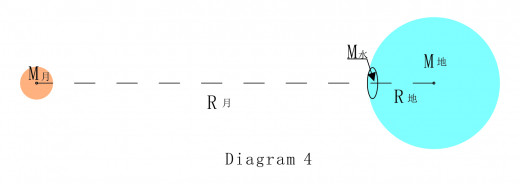
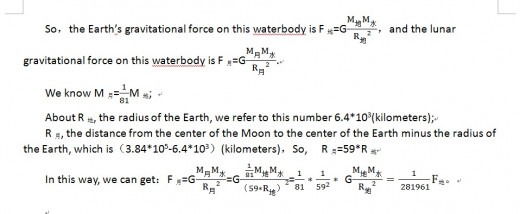
So this is really a big surprise. The lunar gravitational force on the waterbody is only 1/281961 the Earth’s gravitational force on the same waterbody.
How weak the lunar gravitational force is. Such a weak force, and we can count on it to oscillate currents and flood the tides in the ocean causing tidal effect? It is so obvious that the lunar gravitational force doesn’t make any sense to the cause of tides on the Earth.
Using the same way, we can get that the solar gravitational force on a waterbody on the Earth is only 1/1745 the Earth’s gravitational force on the same waterbody. F日=1/1745 * F地
This means the solar gravitational force is weak too, though it is bigger than the lunar.
(All numbers in this article are from reference books, and used as approximate numbers.
If we let F日divided by F月 we will get 162, that is different from “The solar gravitational force on the Earth is 168 times stronger than the lunar.” in the previous part of this article, but this doesn’t affect the opinion that I am saying here)
So now we can conclude: If the gravitational forces are the forces that cause tides on the Earth, the Sun should be the significant influence not the Moon. But this isn’t in accord with the characteristics of the tidal changes.
There are many other reasons to negate “the gravitational forces cause tides”. The fact that semi-diurnal tides (two almost equal high tides and two low tides each day) happen to both sides of the Pacific Ocean makes a perfect example.
The Moon, its main force we regard now as the cause of tides, only flies across the Pacific Ocean once a day. That is to say its gravitational force only has one chance to influence on the Pacific Ocean. So how can the Pacific Ocean have semi-diurnal tides?
The spectacular tidal bore on August 18th in lunar calendar in the Qiantang River in China makes another example. When the tidal bore happens, the so called protagonist of this tidal scene, the Moon is actually hidden behind the Earth, facing away from the Pacific Ocean.
But people’s imaginations are endless.
Diagram 5 shows one assumption: The lunar gravitational force drives tides in the direction of the arrows. It’s like the Moon exerts its gravitational force ahead, and the water at the back of the Earth will move in the opposite direction ------ bulge up.
It can be thought of roughly like Diamond Connecting Mechanism that we see in an extendable sliding door (a door that can stretch out and draw back). If we pull out the front, the back will stretch out, keeping every component in the same distance. But how can we refer the flowing water to the stiff mechanism? Does it obey the common sense? Isn’t it way too far-fetched?
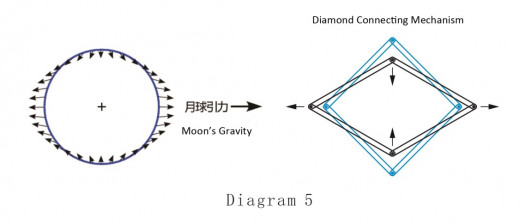
The cause of tides on the Earth is relevant to the Moon, but not the lunar gravitational force, then what is it? This really gives us headaches. But if we follow a direction in which we search all the phenomena and objects that relevant to the Moon’s movement, we may find the answer.
I have found the answer. The answer is the neglected movement of the Earth: Earth rotating about the Earth–Moon barycenter, a responsive motion to its interaction with the Moon. I have a name for this movement: “ZiZhuan” (Simplified Chinese:子转; Pinyin: ZiZhuan)
People often use the words - staggering, swaying… to describe the Earth rotating about the Earth–Moon barycenter. I am more concerned about its special condition ---- eccentric (off center) rotation. Speaking of eccentric rotation, you may relate it to some scary admonitions given by teachers when they mention centrifugal force in a physics class.
A flywheel of a machine or a rotor of a dynamo in a fast speed…, if there is a little off center, the damages will be significant.
The Earth’s “ZiZhuan” is not a little eccentric. The radius of the Earth is 6380 kilometers, the length of the Earth’s center of mass to the center of the Earth’s eccentric rotation (the barycenter of the Earth-Moon system) comes to 4680 kilometers!
Fortunately the Earth’s “ZiZhuan” (“子转”) is comparatively slow; Otherwise it is hard to imagine the Earth accommodates so many living beings letting them live and propagate and becomes a beautiful home of our own.
One of the big characteristics of the eccentric rotation is its radius varied in length at different positions which causes different linear speed in each tangential direction on the surface of the body.
The left drawing in Diagram 6 is a cross-section of the Earth (using the orbit plane of the Earth’s “ZiZhuan” (“子转”) , the plane of the Earth rotating about the Earth–Moon barycenter). We mark every 30°around the circumference, and make 12 points from A to L.
Let’s compute (using the graphing method and function) each linear speed in each tangential direction as the Earth rotates about the Earth–Moon barycenter. We can get that the variation of the linear speeds turn out to be a sine wave diagram. See the right drawing.
In the left drawing, O is the pivot of the Earth’s “ZiZhuan” (“子转”).
Each arrow on the arrow line shows the tangential direction of each point. The length of the arrow line shows the value of the linear speed.
So point D (a point on the Earth facing away from the Moon) has the maximum linear speed - 106KM/H; point J (a point on the Earth facing toward the Moon) has the minimum linear speed - 16KM/H.
The maximum minus the minimum is 90KM/H. This is the difference of the linear speeds on the surface of the Earth when the Earth rotates about the Earth–Moon barycenter , this speed difference will be added to the Earth’s rotation.
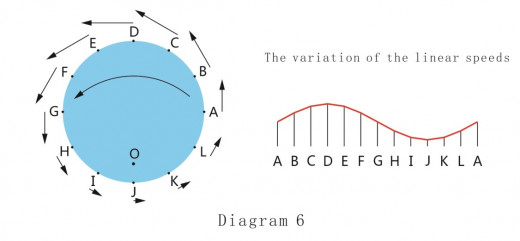
What does this 90KM/H mean? Let’s compute another number. When the Earth rotates on its own axis, its speed on the equator is: (the circumference of the Earth’s equator divided by 24 (hours))
V=1670(KM).
This is the linear speed on the equator when Earth rotates on its own axis, the linear speed at other latitudes will be smaller. Take latitude 30°for example, its linear speed is
1670*cos30°=1446(KM).
Compare the speed difference of the Earth’s “ZiZhuan” (“子转”) with the speed of Earth’s rotation: 90km/1670km=1/18.6, approximately 1/18, that is to say, the Earth’s “ZiZhuan” (“子转”) adding to the Earth’s rotation will affect about 1/18 of the Earth’s rotational speed (affect only about 1/16 of the Earth’s rotational speed at latitude 30°).
Compare this result with the lunar gravitational force we computed early, “The lunar gravitational force on a certain waterbody on the Earth is only 1/281961 the Earth’s gravitational force on the same waterbody.” which gives more influence? Aren’t we clear now?
Compare 1/18 with 1/281961, of course we will accept that 1/18 gives more influence. But people still have questions about the speed difference, 90KM/H, what is the influence it brings to the gigantic Earth? I am sad to tell everybody, the actual situation may be much “worse” than you think. Because this speed difference is generated in 12 hours.
For a semi-diurnal tide, only 6 hours to flood the tide. So let’s half it. Let’s half it again (use arithmetic average method) to know the average increment of the speed (not the average acceleration). And we get 22.5KM/H. But it is fine. This is already good enough to cause the tide.
First, let’s talk about how the variation of the linear speeds causes the tide. Please refer to the diagram 6 again. Let’s assume the Pacific Ocean is at point A, at this time, its linear speed comes to a medium speed. According to the direction of Earth’s rotation, the Pacific Ocean will turn to point B, C, D in order. In this process, its linear speed is accelerating.
The water in the Pacific Ocean has its fluidity and is little affected by the frictional force. by the effect of inertia, the water lags behind the ocean floor and moves to the west relatively, which results in the flood tide in the west side of the Pacific Ocean and the ebb tide in the east side of the Pacific Ocean. Then the Pacific Ocean turns to point E, F, G. In this process, its linear speed is decelerating, the water which has just caught up with the linear speed of the Earth’s “ZiZhuan” (“子转”) is affected by the counter force coming from the west side of the Pacific Ocean and moves to the east with great strength and vigour, which results in the flood tide in the east side of the Pacific Ocean and the ebb tide in the west side of the Pacific Ocean.
This is the flood tide and ebb tide on the point of the Earth facing away from the Moon. Do you feel this explanation is more fair and reasonable?
The Earth’s rotation continues, the Pacific Ocean turns from point G to H, I, J (J is a point on the Earth facing toward the Moon, a point nearest to the Moon, its linear speed reaches to a minimum value) then to point K, L and then back to A where its linear speed increases to the medium speed.
In this process, the linear speed changes from fast to slow, and then slow to fast, forming a new set of flood tide and ebb tide.
Because the Pacific Ocean is irregular shaped and has different widths at different latitudes, it copes differently with tides. Adding other factors, different locations at different latitudes experience different tidal frequencies. Some locations experience diurnal tides, some semi-diurnal tides. And some mixed tides because of the changing intersection angle between the plane of the Earth’s “ZiZhuan” (“子转”) and the plane of Earth’s rotation and some other factors.
In conclusion, the Earth’s “ZiZhuan” (“子转”) is the main factor that causes tides on the Earth (the honor the Moon’s gravity took for the cause of tides should be transferred to the Earth’s “ZiZhuan” (“子转”)).
In daily lives, we all have this experience, when we walk holding a bowl of soup, we will walk carefully because we worry about the splash of the soup. Because we know we are doing a variable speed motion as we start, stop, and walk. The ocean floor is like a big bowl, the ocean water is like the soup contained in this bowl. The Earth’s “ZiZhuan” (“子转”) is the variable speed motion, the result is the ocean water sloshes back and forth, generating tides. Because the Earth’s “ZiZhuan” (“子转”) is a responsive motion to the Earth’s interaction with the Moon, the Earth’s “ZiZhuan” (“子转”) includes all the information about and relating to the Moon and the Moon’s movement, such as the mass of the Moon, the distance from the Moon to the Earth, the rotational speed of the Moon and its period, its phases and many others. So tides caused by the Earth’s “ZiZhuan” (“子转”) seem to have a relation with the Moon’s motion and some other changes of the Moon, which causes misunderstandings and gives wrong impressions.
Here, let’s continue our previous topic, and discuss the 22.5KM/H, average increment of the speed in 6 hours, and its influence on tides.
Let’s take the Pacific Ocean for example. The mean depth of the Pacific Ocean is 4000 meters, and the mean depth of the continental shelf is only about dozens of meters, the difference is about hundreds of times.
We know that the flow speed of the water is inversely proportional to the sectional area. Here the flow speed of the water is inversely proportional to the depth of the ocean. From computation, we can get that the water of the Pacific Ocean with a speed of 22.5KM/H will be accelerated to 2250 kilometers an hour when meeting the continental shelf. This is kind of scary, but we haven’t cut off the resistance such as frictional forces and others yet. If we cut off 90% for the resistance and make a bold estimate, there will still be a speed of 225 kilometers an hour. If 40 meters high water with a speed of 225 kilometers an hour, races to the coast in continuous 6 hours, this should not be counted as “tides”, this is a standard “Doomsday”. In a real situation, the allowed value in the loss of the energy should be greater than 90%! If we assume 99% for the loss of the energy, assume 450KM for the width of the continental shelf, there would be 12 meters high tidal bulge in the ocean water above the continental shelf in 6 hours.
The Sun also influences tides. Some people may ask, the linear speed of the Earth’s revolution around the Sun is much bigger, why tides are more relevant to the Earth’s “ZiZhuan” (“子转”) relating to the Moon? I still need to think of that more.
My initiatory explanation for this is: it’s because the radius of the Earth’s “ZiZhuan” (“子转”) is closer to the radius of the Earth’s rotation, especially in a short time, such as half of a day (see the Diagram 7), the track of the Earth’s “ZiZhuan” (“子转”) (red line) almost coincides with the track of the Earth’s rotation (blue line). In this way, the influence the Earth’s “ZiZhuan” (“子转”) gives to the Earth’s rotation is more durable and more effective.
In the Earth’s revolution around the Sun, because the radius is much larger, the track of the Earth’s revolution in half of a day is almost a straight line, the influence the Earth’s revolution gives to the Earth’s rotation almost on a point of tangency, so this influence is much smaller. Another guess, the Sun depends on its gravity to influence the Earth more.
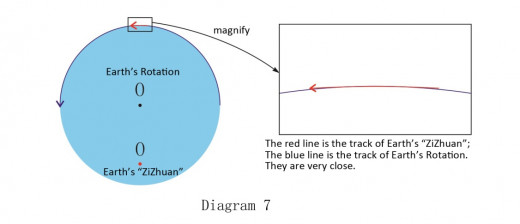
Speaking of the variation of the linear speeds in the Earth’s “ZiZhuan” (“子转”), people will relate it to the change of centrifugal force. But because the water caused by the inertia effect has been deferred, its linear speed is discounted to a small value. According to the equation of the centrifugal force F=MV2/R, the centrifugal force is proportional to the square of the linear speed, so the small linear speed of the Earth’s “ZiZhuan” (“子转”) goes through a square and becomes negligible. So the centrifugal force is hard to make a difference in tides.
3. Other Meanings for Earth’s “ZiZhuan” (“子转”)
1. Changing speed for unknown reason is found in the Earth’s rotation. Will it be the influence of the Earth’s “ZiZhuan” (“子转”)? I think the Earth’s “ZiZhuan” (“子转”) is at least one of the multiple influences.
2. Living beings on the Earth are affected by circadian clock. Circadian clock have daily rhythm, monthly rhythm, yearly rhythm. The monthly rhythm is considered to have relation with the phases of the Moon (New Moon, Full Moon, First Quarter Moon, and Third Quarter Moon) and others. From the earlier part, we have already known the lunar gravitational force is weak, and the Moonlight (only can be regarded as second handed Sunlight) is weak too. So let’s think in this way: the emergence of the monthly rhythm of the living beings relies on the Earth’s “ZiZhuan” (“子转”) more. It is the Earth’s “ZiZhuan” (“子转”) that makes the speed on the surface of the Earth change with rhythm and lets human beings perceive and response to it which results in interaction between human beings and the Earth.
3. The variation of the rotational speeds on the surface of the Earth caused by the Earth’s “ZiZhuan” (“子转”) is sure to influence the general atmospheric circulation too. Comparing with the sea water, the atmosphere has smaller frictional force between it and the surface of the Earth, so it has a larger degree of freedom. But for one day, due to the offset of the positive and negative of the variations of the rotational speeds, there seems no difference. If we are going to do an hour a weather forecast , we need to count in the factor of the Earth’s “ZiZhuan” (“子转”).
4. Another important meaning for the Earth’s “ZiZhuan” (“子转”) is its relationship with Earthquakes. Many materials say that Earthquakes is relevant to the Moon’s phases. For example, when it is full Moon or new Moon, there goes Earthquakes.
Since we have proved the effect of the Moon’s gravity on the Earth is quite limited, we need to shed more light on the Earth’s “ZiZhuan” (“子转”). Let’s think in this way, the occurrence of Earthquakes is more or less two plates of the Earth squeeze or separate. When the boundary between the two plates is moved to the inflection point of the speed change of the Earth’s “ZiZhuan” (“子转”) (the front plate at its decreasing linear speed and the back plate at its increasing linear speed), two plates will squeeze each other. Conversely, the front plate at its increasing linear speed and the back plate at its decreasing linear speed, two plates will separate. At this time, the two plates just obtain the force from different directions, so they squeeze or separate. Is this the most powerful reason for the cause of Earthquakes?
Moreover, the flowing magma inside the Earth is also affected by the variation of the speeds caused by the Earth’s “ZiZhuan” (“子转”), so this gives inestimable impact forces to the plates. If we take a look at the allocation map of the occurrence of Earthquakes, many locations of Earthquakes are at middle and low latitude. No Earthquake happens in the polar region, this at least tally with one of the characteristics of the Earth’s “ZiZhuan” (“子转”): The range of the speed variation of the Earth’s “ZiZhuan” (“子转”) is at its minimum in the polar region. It is hard to forecast Earthquakes as we must find every factor that causes Earthquakes. Maybe we can start from here.
4. Summary and Outlooks
Our cognition of our Earth works like the screening of the realistic “blind men and an elephant”. (A Chinese ancient tale, a blind man feels an elephant, only touching some parts of it, and concludes what the elephant is like.) The people who measured the rotational speed of the Earth say: the Earth is rotational planet with speed changes for no reason; the people who researched on tides say: the Earth is a planet controlled by the Moon’s gravity; the people who researched on the rhythm of the living beings say: the Earth have living beings that sensitive to the light; the people who researched on Earthquakes say: the plates of the Earth are like dodgem cars at some amusement park, running and bumping all up to you, without any rules……
“We can’t see the real appearance of the mountain, because we are deeply inside of it.”(lines from a Chinese poem, now become an idiom) if we can stand up high enough in the deep space, appreciate the overall situation of the Earth-Moon interaction with an telescope that can exceed the eyesight, do an earnest day by day and month by month observation, and use the wisdom that can break through the conventional thinking to observe, analyze, and summarize, then everything will become easier and clearer: the speed change in the Earth’s rotation is just the result of its rotational speed adding its eccentric rotational speed caused by the Earth’s “ZiZhuan” (“子转”), and this speed change affects the atmosphere, lithosphere, hydrosphere and biosphere.
It is early known that the Earth rotates about the Earth-Moon barycenter. But it’s a pity that we don’t follow the vine to get the melon, track down and research deeply. The purpose of this article is to confirm its value, and appeal to people to take this research seriously.
I am only a science enthusiast. I draft this article with curiosity. Astronomy and geography, celestial mechanics……are knowledges outside of my work. I haven’t touched these formulas of physics and mathematics for over 30 years, I can say I am a complete “brifessional” (a professional made of brick, an invented word) And here are the reasons: first, this is not my major, I can only abase myself to be a “brifessional”; second, I have used the plates of Earth to slap many opinions here, I could be counted as a “brick-slap” “brifessional”; third, this article is roughly drafted, just like brick making, I am only here to “throw a brick to attract jades” (Chinese idiom, means “to offer a few commonplace remarks by way of introduction so that others may come up with valuable opinions”), so I could be counted as a “brick-throw” “brifessional”. I hope my “brick-throw” will open a train of thought for further research to be made. We expect with confidence that there will be a more perfect and abundant achievement in the relevant area in the near future.

